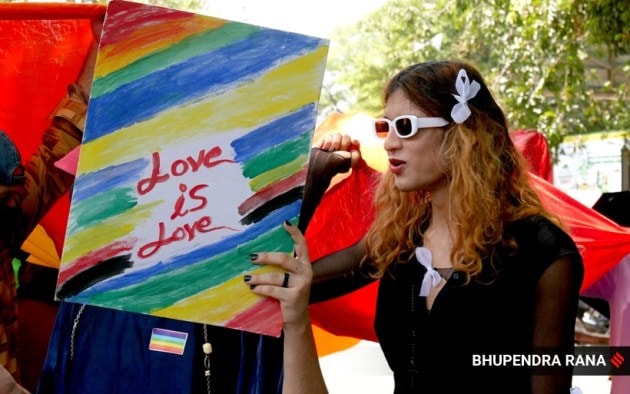This Pride Month, delve into the global and Indian history of the LGBTQ+ movement
Still a stigma in several pockets of the world, the Pride Month celebrations stand to show the growth and development of the LGBTQ+ community over time.
 1 / 9
1 / 9June, also known as the Pride Month, is dedicated to the LGBTQ+ community, and holds significance worldwide. Still a stigma in several pockets of the world, this month's celebrations stand to show the growth and development of the LGBTQ+ community over time. A month which adamantly teaches tolerance of love and identity, and preaches equality in all terms, the Pride Month has been a pioneering step towards a discrimination-free world.
As such, this year the Forum Foundation held a pride march at Vadodra. (Source: Bhupendra Rana/Indian Express)You have exhausted your
monthly limit of free stories.Read more stories for free
with an Express account.Already have an account? Sign InThis story is exclusive to subscribers. Become one now. Use code IE10Already a subscriber? Sign InThis story is exclusive to subscribers. Become one now. Use code IE10This content is exclusive for our subscribers.Subscribe now to get unlimited access to The Indian Express exclusive and premium stories.Already a subscriber? Sign In- 2 / 9
The Pride Month history dates back to the Stonewall Uprising of 1969. On June 28, a gay club in Greenwich Village, New York City was raided by the New York police. Due to the police roughly handling and hauling guests and employees out of the bar, a riot spread out among neighbouring residents and bar patrons. The following six days saw several violent clashes between the rioters and the law enforcement in and around Christopher Street. This riot ultimately culminated into being the catalyst for USA's gay rights movement. (Source: Bhupendra Rana/The Indian Express)
- 3 / 9
Ever since, June 28 is observed as the Global Pride Day. The Stonewall Uprising became the force for political gay activism. To celebrate this, on the one-year anniversary of the uprising, the LGBTQ+ community and supporters organised the first ever pride parade in 1970. Within one year of this march, in 1971, cities in and around the US like Boston, London, and West Berlin also began organising pride parade on this day in a global symbol of solidarity. (Source: Bhupendra Rana/The Indian Express)
- 4 / 9
The following years saw steady vocal support for the gay cause, and in 1971, the pride flag was first designed and inaugurated. The initiative was taken up by America's first openly gay politician, Harvey Milk. His friend, Gilbert Baker, designed two flags with eight colours which was inaugurated in the 1978 San Francisco Pride Parade. However, with time and reason, the colours were changed and it resulted in the flag that we see today. (Source: Bhupendra Rana/The Indian Express).
- 5 / 9
However, the Pride Flag colours were not changed aimlessly. Each colour on the flag is representative of a particular symbol. They are as follows; pink is for sex, red is for life, orange is for healing, yellow is for sunlight, green is for nature, turquoise is for magic, blue is for serenity, and violent is for spirit. Moreover, despite having a common flag that binds the whole LGBTQ+ community, there continues to be over 20 other different kinds of flags which communities within the spectrum use as symbols of visibility.
In this photo, India's LGBTQ+ community held a pride march at JM Road to honour the coming of Pride Month. (Source: Pavan Khengre/The Indian Express)- 6 / 9
Though the worldwide history of Pride month and Pride March goes back decades, India's history is relatively young. It began in 1992 which observed India's first gay rights protest in front of Delhi's police headquarters. This protest came in response to police acting against some men in Connaught Place's Central Park, on suspicion of them being homosexuals. The Aids Bhedbhav Virodi Andoland not only spearheaded this protest, but also took the first legal action when they filed a public interest litigation which challenged Section 377. Section 377 of the Indian Penal Code criminalised homosexuality, and was not removed until September, 2018. (Source: Pavan Khengre/The Indian Express)
- 7 / 9
The Indian gay rights movement took seven more years to progress into its first ever Pride Parade. In 1992, this parade took place for the first time not just in India, but also Southeast Asia, in Kolkata. Known popularly as the Kolkata Rainbow Pride Walk, LGBTQ+ community members and supporters flocked to the city from across the country to be a part of it. Since then, there have been pride walks organised in over 21 cities in India. (Source: Pavan Khengre/The Indina Express)
- 8 / 9
The first country which legalised same-sex marriage was The Netherlands in 2000. By a three-to-one margin, the Dutch parliament passed the landmark bill for the global LGBTQ+ community. This became a stepping stone for decriminalising and legalising various aspects of the LGBTQ+ community around the world. Within just a couple of years of that, countries like Belgium (2003), Canada and Spain (2005), South Africa (2006), Norway (2008) and more took up the reign of recognising and legalising the right of same-sex couples to marry. (Source: Pavan Khengre/The Indian Express)
- 9 / 9
With more leading democracies like the USA (2015), the Germany (2017), and more legally recognising same-sex marriage, India has been put under a microscope by the global LGBTQ+ community. There has been mounting internal as well as external pressure to legalise marriage between same-sex couples. The Supreme Court of India is currently reviewing a petition, Supriyo v Union of India, which challenges criminalising same-sex marriage. The question of whether India is ready for such a significant social change has been looming large over the Indian community, as the LGBTQ+ community and supporters wait with bated breath.